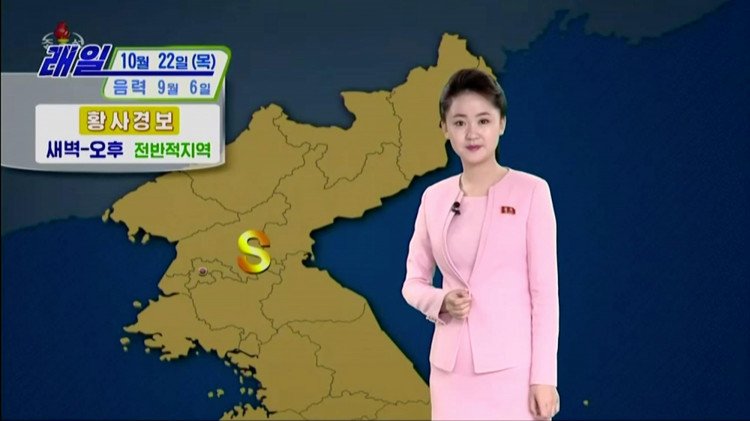North Korea's capital city resembled a ghost town Friday, courtesy of warnings from state authorities of a natural occurrence that some fear could cause the spread of coronavirus. The government has told its people to remain inside their homes, warning that a yellow dust storm from China could transmit the virus over the border.
State-run the Rodong Sinmun newspaper disclosed that "all workers... must clearly recognize the danger of invading malicious viruses" as a response to the yellow dust cloud, BBC's Disinformation Team quoted the media outlet as saying.
North Korea claims it continues to have "zero" cases of coronavirus and keeps that record, an assertion that medical experts question. The streets of Pyongyang were said to have become devoid of any human movement after the warning. The hermit state has also reportedly maximized its efforts to keep the virus at bay since January by implementing rigid lockdowns, strict isolation measures, and banning any form of activities within the country.
Government-run KRT TV on Thursday announced the yellow dust may contain lethal elements, like heavy metals and pathogenic microorganisms including different kinds of viruses. The Russian consulate in North Korea disclosed via social media on the same day that the North's Foreign Ministry had ordered all foreign tourists in the country and its personnel to wait out from inside their homes until the dust storm settles.
As of Friday, there was no immediate update and clarification on how the storm took its course. However, there is no strong scientific data to prove that it is possible for the coronavirus to be transmitted in such a way. Yonhap has noted that the yellow dust – a blend of toxic dust and desert sand – began sweeping Wednesday from the Gobi Desert that stretches across Mongolia and China, as well as from Inner Mongolia's highlands.
According to BBC, yellow dust refers to sand from the two countries' deserts that blow into South and North Korea at certain periods of the year. It is mixed with toxic dust that for many years has sparked health worries in both nations. North Korean state media claim that studies connecting the virus to airborne spread suggest it should take the inbound flow of yellow dust very seriously, specialist news site NK News disclosed.
Despite news stories implying that coronavirus could be spread through dust, scientists say it is very unlikely for the pathogen to travel thousands of miles in dry yellow dust. The U.S. Center for Disease Control also pointed out that coronavirus can stay airborne for hours. However, being infected by the virus in this manner is nearly impossible, the CDC said.






